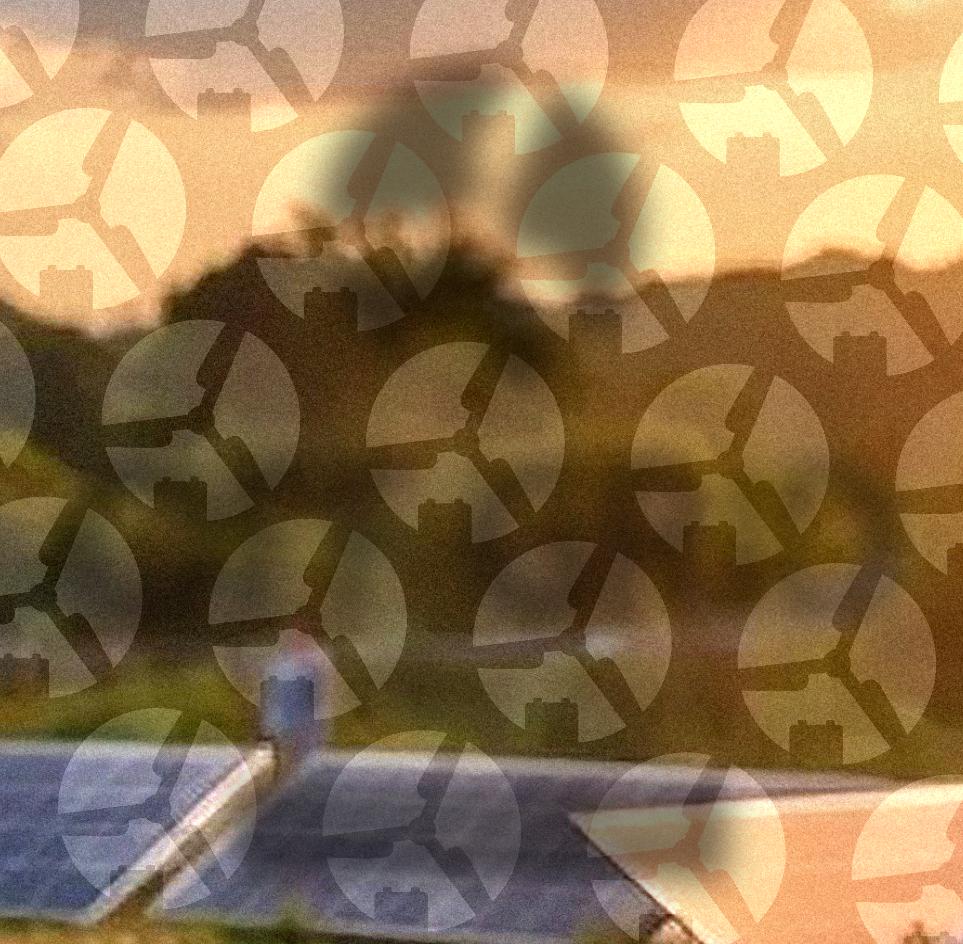



ALTA EFICIÊNCIA ENERGÉTICA

Durabilidade e Longa Vida útil
Alta Eficiência e Estabilidade
Segurança Excepcional
Peso Reduzido e Design Compacto
Desempenho Confiável em Temperaturas Extremas

A bateria LiFePO4 (Fosfato de Ferro e Lítio) é conhecida por sua segurança e estabilidade O material é infinitamente mais estável do que outros compostos de lítio ou de chumbo ácido. Isso significa que ele é menos propenso a sofrer decomposição térmica, mesmo em condições de alta temperatura ou sobrecarga. Além disso, têm um risco muito menor de incêndio ou explosão em comparação com outras baterias de íon-lítio. Isso ocorre porque o fosfato de ferro e lítio não entra em combustão, mesmo que a bateria seja danificada, perfurada ou incinerada.
NÓS FABRICAMOS !
Aúnica com 2 conectoresAnderson® Fábrica próprianaAmerica Latina
Pós vendas e suporte no Brasil
A Off Grid Tecnologia é a única empresa que realmente fabrica baterias de lítio. Dominamos o processo do início ao fim, sem interferência de empresas chinesas. Nossa experiência em energia, indústria e telecomunicações vem desde 1992. As células usadas são topo de linha o que garante até 8.000 ciclos; muito superior à maioria das baterias que se dizem “grade A” e entregam menos de 4.000 ciclos.
– Segurança: Redução de riscos de acidentes ou falhas.
– Eficiência: Menos perdas de energia e maior aproveitamento da capacidade da bateria.
– Custo-Benefício: A longo prazo, a durabilidade e a confiabilidade das suas baterias podem representar uma economia significativa.
Única bateria no mundo que usa conectores ANDERSON®: O uso exclusivo de conectores patenteados é um grande diferencial técnico. Esses conectores são conhecidos por sua confiabilidade, segurança e eficiência, eliminando riscos de curtos-circuitos e perdas de energia.
Isso pode ser um fator decisivo para clientes que buscam segurança e desempenho em seus sistemas.
Posicionamento de Mercado:
Nossa empresa não apenas compete, mas lidera em tecnologia e qualidade na América Latina, oferecendo produtos que atendem a padrões internacionais. A fábrica fica em Ciudad del Este no Paraguay, onde energia e insumos têm preços competitivos, incentivos fiscais e tributários, localização estratégica facilitando o transporte de mercadorias bem como o baixo custo na importação de insumos, ainda mais com os recentes planos de conclusão do Corredor Bioceânico que nos conectará ao Oceano Pacífico e reduzirá em quase 20 dias qualquer frete marítimo internacional.
O Paraguay é membro do Mercosul (Mercado Comum do Sul), o que facilita o acesso a mercados como Brasil, Argentina, Chile e Uruguai, com tarifas reduzidas e isenções.
O Corredor Bioceânico representa uma oportunidade significativa para o Paraguay se consolidar como um hub logístico e comercial na região, impulsionando seu crescimento econômico e integração global.
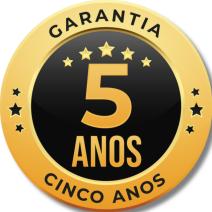
PORQUE USAR OFF GRID TECNOLOGIAAO INVÉS DE baterias estacionarias de chumbo ácido:
Os materiais usados nas baterias LiFePO4 são menos tóxicos e mais ambientalmente amigáveis do que os de outras químicas de lítio e chumbo-ácido convencionais. Isso reduz os riscos ambientais e de saúde associados ao descarte ou vazamento de materiais.
As baterias de chumbo-ácido contêm ácido sulfúrico, que é altamente corrosivo e cancerígeno. Se a bateria for danificada ou mal mantida, pode vazar, causando danos ao veículo ou recinto, e ferimentos graves se entrar em contato com a pele ou os olhos. Sem contar que, a cada carga e descarga esse mesmo ácido é lançado no ar expondo os ocupantes.
Durante o carregamento, as baterias de chumbo-ácido liberam hidrogênio e oxigênio, que são gases altamente inflamáveis. Se acumulados em um espaço confinado, como o compartimento da bateria no motor home ou de sua casa, podem causar explosões.
A sobrecarga da bateria pode levar ao superaquecimento, causando danos e aumentando o risco de incêndio Um curto-circuito pode ocorrer se os terminais da bateria entrarem em contato com objetos metálicos, causando faíscas, superaquecimento ou até incêndio
Baterias de chumbo-ácido exigem manutenção regular, como a verificação do nível de água (eletrólito) e a limpeza dos terminais. A negligência pode levar a falhas na bateria, vazamentos ou outros problemas de segurança. E por fim, se ocorrer a descarga profunda, você vai danificar permanentemente a bateria, reduzindo sua vida útil e eficiência.
NOSSAGARANTIA
Devido à alta qualidade dos materiais e à confiabilidade do projeto das Baterias Off Grid, oferecemos 5ANOS de garantia para todos os modelos.
Lithium Iron Phosphate (LiFePO4)
Battery OFG12100LFP (12.8V, 100AH)




Lithium Iron Phosphate (LiFePO4)
Battery OFG12100SLM (12.8V, 100AH)




Lithium Iron Phosphate (LiFePO4)
Battery OFG12200LFP (12.8V, 200AH)




Features of LiFePO4 Battery:
- Longer Cycle Life: have a longer cycle life than lead-acid batteries, and can last for 10–12 years when properly maintained. They can also be charged and discharged more than 8,000 times while maintaining 80% of their initial capacity.
- Can last for 2,500–9,000 charge cycles, depending on operating conditions.
- Are about 70% lighter than comparable lead-acid batteries.
- Our batteries can deliver twice the power of lead-acid batteries, even at high discharge rates.
- Safer than lead-acid batteries because they don't risk exploding or combusting due to short circuits, overcharging, or high impact.
- Operate in temperatures ranging from -20°C to 70°C.
- Longer Cycle Life: Offers up to 50 times longer cycle life and five times longer float/calendar life than lead acid battery, helping to minimize replacement cost.
- Eco-Friendly: Non-Toxic Materials: Iron and phosphate are abundant and less polluting than cobalt or nickel. Recyclability: Easier to recycle due to the absence of toxic heavy metals.
- Low Self-Discharge: They lose only 1-3% of charge per month, compared to 5-15% in lead-acid batteries, advantageous for seasonal use.
- Versatile Applications: Renewable Energy, solar/wind storage, electric mobility, cars, buses, bicycles, boats and automotive sound.
- UPS & Emergency Systems: Reliability in hospitals or data centers.

Nominal Voltage
Nominal Capacity Energy
Electrical
Characteris�cs
Standard Charge
Standard Discharge
Environmental
Mechanical
Internal Resistance Cycle Life
Months Self Discharge
Efficiency of Charge
Efficiency of Discharge
Charger Voltage Charge Mode
Charger Current
Max. Charge Current
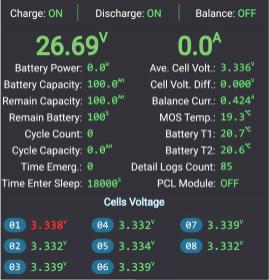

Sistema inteligente de conexão via Bluetooth para gerenciamento em tempo real.
8V 200Ah (C5,25℃) 2.560Wh ≤200mΩ >6.000 cycles @100% DOD; >8.000 cycles @80% DOD <3%
@0.5C
@1C
Charge Cut-off Voltage 14.6+0.2V
Continuous Current Max. Pulse Current
Cut-off Voltage
Charge Temperature Discharge Temperature
Storage Temperature Water Dust Resistance
Cell & Method Case
Dimensions (in./mm.)
0.2C to 14.6V, then 14.6V, charge current to 0.02C (CC/CV)
≤30A(Suggested) 50A
℃to 40 ℃(32F to 104F) @60±25% Relative Humidity
IP56
Lithium Iron Phosphate (LiFePO4)
Battery OFG12400LFP (12.8V, 400AH)


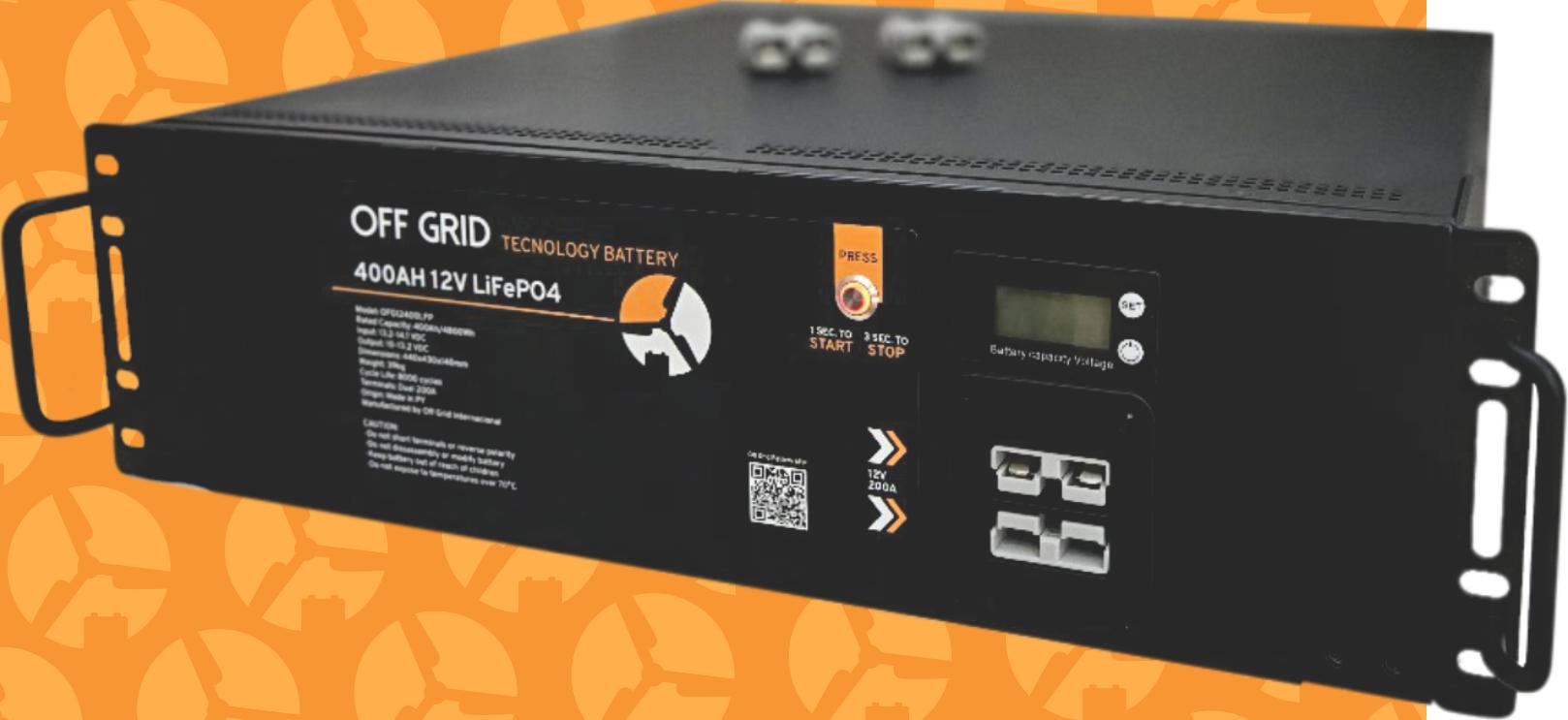

Features of LiFePO4 Battery:
- Longer Cycle Life: have a longer cycle life than lead-acid batteries, and can last for 10–12 years when properly maintained. They can also be charged and discharged more than 8,000 times while maintaining 80% of their initial capacity.
- Can last for 2,500–9,000 charge cycles, depending on operating conditions.
- Are about 70% lighter than comparable lead-acid batteries.
- Our batteries can deliver twice the power of lead-acid batteries, even at high discharge rates.
- Safer than lead-acid batteries because they don't risk exploding or combusting due to short circuits, overcharging, or high impact.
- Operate in temperatures ranging from -20°C to 70°C.
- Longer Cycle Life: Offers up to 50 times longer cycle life and five times longer float/calendar life than lead acid battery, helping to minimize replacement cost.
- Eco-Friendly: Non-Toxic Materials: Iron and phosphate are abundant and less polluting than cobalt or nickel. Recyclability: Easier to recycle due to the absence of toxic heavy metals.
- Low Self-Discharge: They lose only 1-3% of charge per month, compared to 5-15% in lead-acid batteries, advantageous for seasonal use.
- Versatile Applications: Renewable Energy, solar/wind storage, electric mobility, cars, buses, bicycles, boats and automotive sound.
- UPS & Emergency Systems: Reliability in hospitals or data centers.

Nominal Voltage
Nominal Capacity Energy
Electrical
Characteris�cs
Standard Charge
Standard Discharge
Environmental
Mechanical
Internal Resistance Cycle Life
Months Self Discharge
Efficiency of Charge


Sistema inteligente de conexão via Bluetooth para gerenciamento em tempo real.
Efficiency of Discharge 12.8V 400Ah (C5,25℃) 5 120Wh
Charger Voltage Charge Mode
Charger Current
Max. Charge Current
≤200mΩ >6.000 cycles @100% DOD; >8.000 cycles @80% DOD <3%
Charge Cut-off Voltage 14.6+0.2V
Continuous Current Max. Pulse Current
Discharge Cut-off Voltage
Charge Temperature
Discharge Temperature
Storage Temperature Water Dust Resistance
Cell & Method Case
Dimensions (in./mm.)
0.2C to 14.6V, then 14.6V, charge current to 0.02C (CC/CV) ≤30A(Suggested) 50A 15.6V+0.2V
℃to 45 ℃(32F to 113F) @60±25% Relative Humidity
℃to 70 ℃(-4F to 140F) @60±25% Relative Humidity
℃to 40 ℃(32F to 104F) @60±25% Relative Humidity
IP56
Lithium Iron Phosphate (LiFePO4)
Battery OFG24100LFP (25.6V, 100AH)



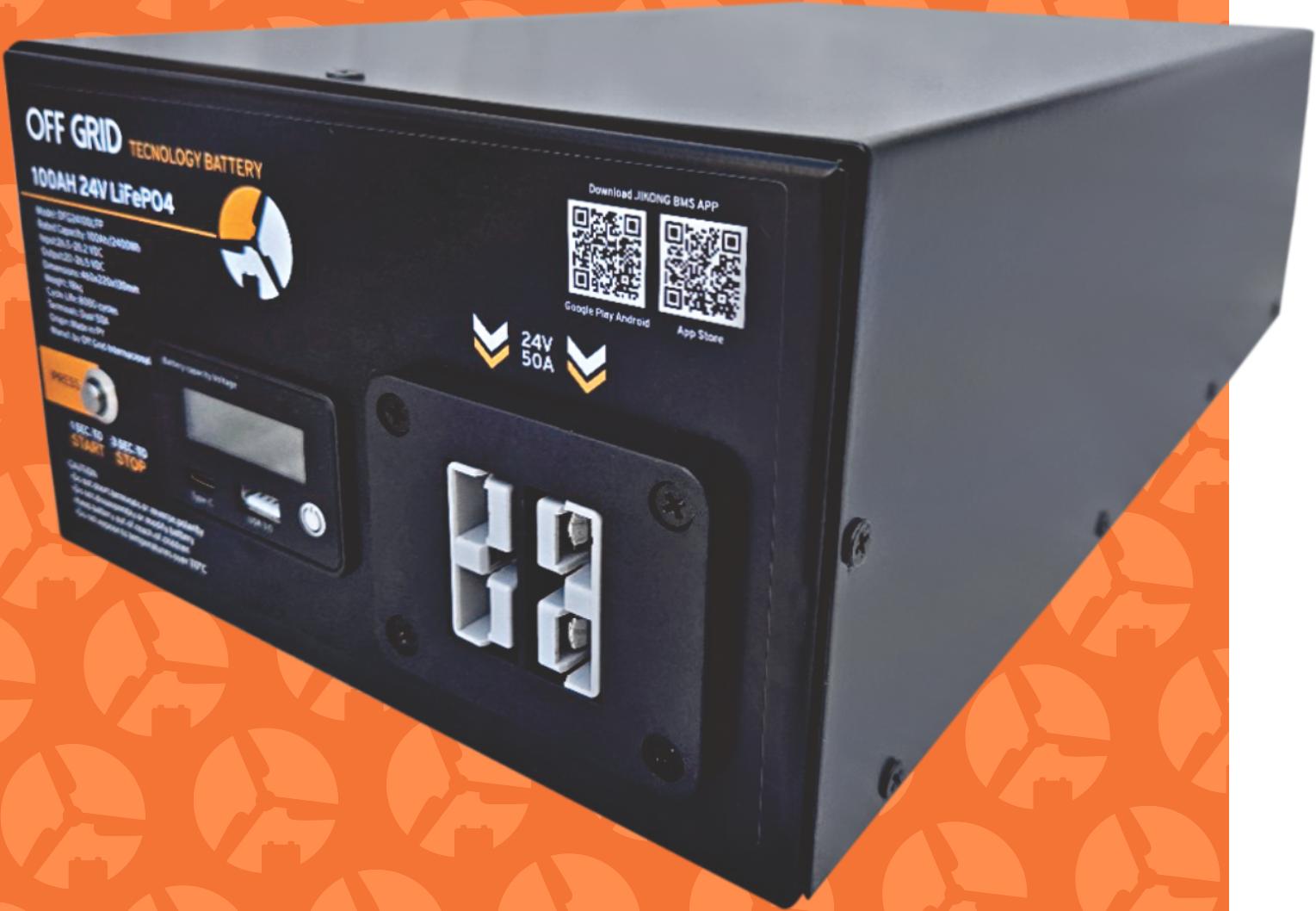
Features of LiFePO4 Battery:
- Longer Cycle Life: have a longer cycle life than lead-acid batteries, and can last for 10–12 years when properly maintained. They can also be charged and discharged more than 8,000 times while maintaining 80% of their initial capacity.
- Can last for 2,500–9,000 charge cycles, depending on operating conditions.
- Are about 70% lighter than comparable lead-acid batteries.
- Our batteries can deliver twice the power of lead-acid batteries, even at high discharge rates.
- Safer than lead-acid batteries because they don't risk exploding or combusting due to short circuits, overcharging, or high impact.
- Operate in temperatures ranging from -20°C to 70°C.
- Longer Cycle Life: Offers up to 50 times longer cycle life and five times longer float/calendar life than lead acid battery, helping to minimize replacement cost.
- Eco-Friendly: Non-Toxic Materials: Iron and phosphate are abundant and less polluting than cobalt or nickel. Recyclability: Easier to recycle due to the absence of toxic heavy metals.
- Low Self-Discharge: They lose only 1-3% of charge per month, compared to 5-15% in lead-acid batteries, advantageous for seasonal use.
- Versatile Applications: Renewable Energy, solar/wind storage, electric mobility, cars, buses, bicycles, boats and automotive sound.
- UPS & Emergency Systems: Reliability in hospitals or data centers.

Nominal Voltage
Nominal Capacity Energy
Electrical
Characteris�cs
Standard Charge
Internal Resistance Cycle Life
Months Self Discharge
Efficiency of Charge
Efficiency of Discharge
Charger Voltage Charge Mode
Charger Current Max. Charge Current
Charge Cut-off Voltage
Current


Sistema inteligente de conexão via Bluetooth para gerenciamento em tempo real.
& Method Case Dimensions (in./mm.) Weight
0.2C to 29 2V, then 29 2V, charge current to 0.02C (CC/CV) ≤30A(Suggested) 50A
6V+0.2V
Lithium Iron Phosphate (LiFePO4)
Battery OFG24200LFP (25.6V, 200AH)




Features of LiFePO4 Battery:
- Longer Cycle Life: have a longer cycle life than lead-acid batteries, and can last for 10–12 years when properly maintained. They can also be charged and discharged more than 8,000 times while maintaining 80% of their initial capacity.
- Can last for 2,500–9,000 charge cycles, depending on operating conditions.
- Are about 70% lighter than comparable lead-acid batteries.
- Our batteries can deliver twice the power of lead-acid batteries, even at high discharge rates.
- Safer than lead-acid batteries because they don't risk exploding or combusting due to short circuits, overcharging, or high impact.
- Operate in temperatures ranging from -20°C to 70°C.
- Longer Cycle Life: Offers up to 50 times longer cycle life and five times longer float/calendar life than lead acid battery, helping to minimize replacement cost.
- Eco-Friendly: Non-Toxic Materials: Iron and phosphate are abundant and less polluting than cobalt or nickel. Recyclability: Easier to recycle due to the absence of toxic heavy metals.
- Low Self-Discharge: They lose only 1-3% of charge per month, compared to 5-15% in lead-acid batteries, advantageous for seasonal use.
- Versatile Applications: Renewable Energy, solar/wind storage, electric mobility, cars, buses, bicycles, boats and automotive sound.
- UPS & Emergency Systems: Reliability in hospitals or data centers.

Nominal Voltage
Nominal Capacity Energy
Electrical
Characteris�cs
Standard Charge
Standard Discharge
Environmental
Internal Resistance Cycle Life
Months Self Discharge
Efficiency of Charge


Sistema inteligente de conexão via Bluetooth para gerenciamento em tempo real.
Efficiency of Discharge 48.0V 100Ah (C5,25℃) 4.800Wh ≤75mΩ >6.000 cycles @100% DOD; >8.000 cycles @80% DOD <3% 100% @0.5C 96~99% @1C
Charger Voltage Charge Mode
Charge Cut-off Voltage 52+0.2V
Charger Current
Max. Charge Current
Continuous Current
Max. Pulse Current
0.2C to 54V, then 54V, charge current to 0.02C (CC/CV)
≤20A(Suggested) 50A
56-57V+0.2V
Discharge Cut-off Voltage 50A 60A Constant, Peak 100A for 10s 40.0V
Charge Temperature Discharge Temperature
Mechanical Cell & Method
℃to 45 ℃(32F to 113F) @60±25% Relative Humidity
℃to 70 ℃(-4F to 140F) @60±25% Relative Humidity
℃to 40 ℃(32F to 104F) @60±25% Relative Humidity
IP56



